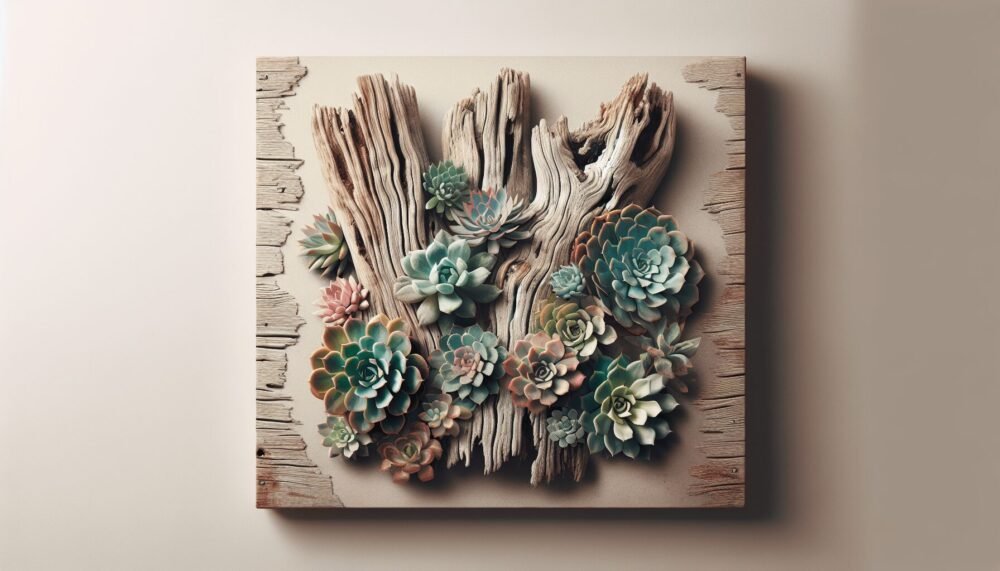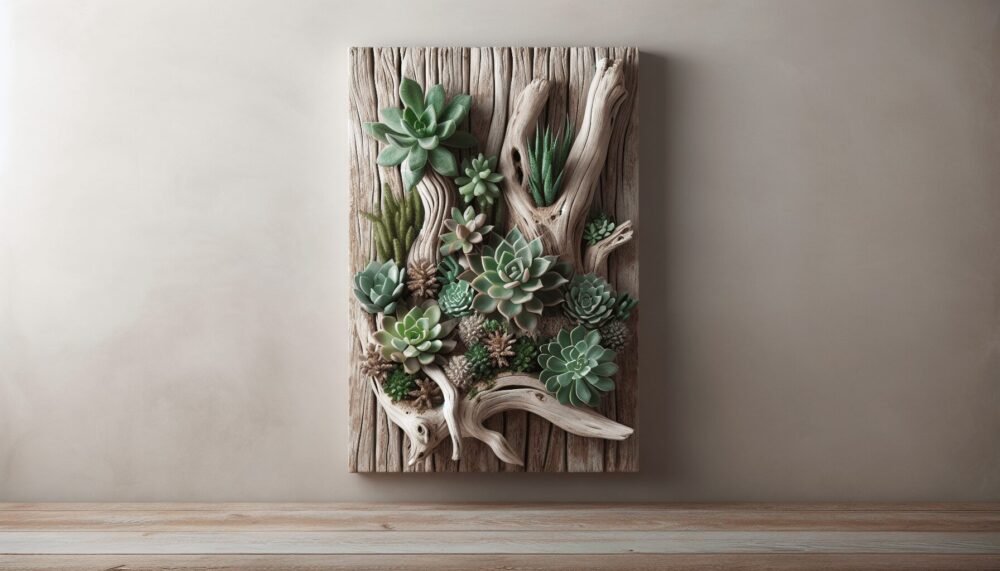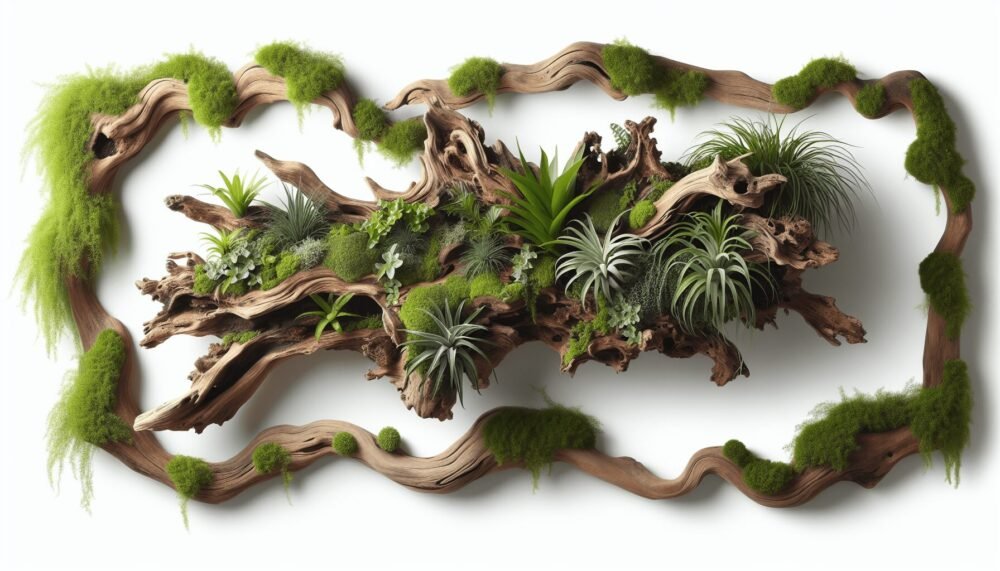Have you ever considered the beauty of incorporating natural elements into your home decor? Driftwood, often found weathered and worn along the shores of beaches, can bring an organic and rustic charm to your interior spaces. Imagine this unique piece of nature hanging on your wall, telling its own story of the sea and sand, adding warmth and character to your living environment.
What is Driftwood?
Driftwood refers to pieces of wood that have been washed onto the shore of a sea, river, or lake by the action of winds, tides, or waves. These pieces are typically weathered and sculpted by saltwater and the elements, giving each one its own unique texture and shape.
The Journey of Driftwood
Driftwood undergoes a fascinating journey before it reaches your wall. Starting as part of a tree or log, it gets carried away by the water. Over time, it may travel many miles, enduring the wear and tear of its marine environment. This natural process not only strips the wood of its bark, leaving behind a smoother surface, but also gives it a silvery-grey appearance that is prized for aesthetic purposes.
Types of Wood Commonly Found as Driftwood
Different types of wood can become driftwood, and each type brings its own characteristics. Here are some common types:
| Type of Wood | Characteristics |
|---|---|
| Cedar | Lightweight, aromatic, resistant to decay |
| Oak | Strong, heavy, durable |
| Pine | Common, lightweight, can have interesting knots |
| Eucalyptus | Strong, resistant to rot, often found in coastal areas |
Understanding the types of wood can help you choose the best piece for your decor needs.
Why Use Driftwood in Home Decor?
Driftwood is more than just a piece of wood; it is art created by nature. Using driftwood for home decor offers numerous benefits that go beyond its aesthetic appeal.
Sustainable and Eco-Friendly
In an era where sustainability is key, using driftwood is an eco-friendly choice. It repurposes natural resources that would otherwise go to waste, thus reducing your carbon footprint.
Unique and Personalized
Each piece of driftwood is unique, making it a one-of-a-kind addition to your home. Its individual shape, texture, and color will never be replicated, offering a piece of art that’s distinctly yours.
Therapeutic and Calming
Natural elements like driftwood can bring a sense of calm and relaxation into your living space. Its organic qualities can have a grounding effect, making your home feel more peaceful and connected to nature.

How to Choose the Perfect Driftwood Piece
Selecting the right piece of driftwood can be both exciting and overwhelming. Here are some tips to guide you.
Size and Space Consideration
Firstly, consider the space where you plan to hang your driftwood. Measure the area to ensure that your chosen piece will fit well without overpowering the room or looking too insignificant.
Shape and Texture
Driftwood comes in many forms—smooth, rugged, straight, or twisted. Think about what shape and texture will complement your decor style. For instance, a twisted piece might add a dynamic element to a modern room, while a smooth, straight piece could bring elegance to a traditional setting.
Color and Finish
Driftwood ranges from pale ivory to dark grey shades. Choosing a color that matches or contrasts effectively with your interior can enhance the overall look. You might also consider whether you want to leave the wood in its natural state or finish it with oil or varnish to enhance its look and durability.
Preparing Driftwood for Display
Before you hang your driftwood on the wall, some preparation is necessary to ensure it looks its best and lasts longer.
Cleaning and Sanitation
Driftwood can harbor salt, sand, and microorganisms. Cleaning it properly is essential for hygiene and longevity.
- Rinse: Thoroughly rinse the driftwood with fresh water to remove surface dirt and salt.
- Soak: Soak the wood in a bleach solution (approx. 1 part bleach to 9 parts water) for a few hours to sanitize it.
- Dry: Let the driftwood dry completely, which may take several days. This step is crucial to prevent mold and decay.
Sanding and Smoothing
Depending on the look you desire, you may want to sand the driftwood to smooth out rough edges. Use fine-grit sandpaper to retain some of the natural texture while removing splinters and sharp points.
Sealing and Finishing
Applying a sealant or finish can protect the wood and enhance its natural colors. Options include:
- Linseed Oil: Penetrates deeply, enhancing the wood grain.
- Polyurethane: Provides a hard, protective surface.
- Beeswax: Offers a natural look while providing moisture resistance.

Decorating Ideas with Driftwood
Driftwood’s natural beauty makes it a versatile decor element. Here are some creative ways to incorporate it into your home.
Driftwood Wall Art
A single piece of driftwood can become a striking piece of wall art. You can hang it horizontally, vertically, or at an angle, depending on your wall space and aesthetic preference. Such an installation can serve as a focal point in your living room or hallway.
Driftwood Shelves
For a blend of function and form, consider using driftwood as shelves. Secure sturdy pieces horizontally on your wall to display books, plants, or other decorative items. This not only adds a rustic touch but also utilizes the strength of the wood effectively.
Driftwood Sculptures
If you’re artistically inclined, you might create a sculpture using multiple pieces of driftwood. Assemble and secure the pieces into a unique form that can stand freely or mount on your wall. This can add a dynamic and artistic element to your space.
Driftwood Frames and Mirrors
Driftwood can be used to frame mirrors or pictures, adding a natural and coastal touch. Arrange smaller pieces around a mirror or picture frame, securing them with glue or nails. The result is a customized and organic-looking frame that stands out.
Maintenance and Care for Driftwood Decor
Keeping your driftwood decor in good shape requires some maintenance but is generally low-effort.
Dusting
Regularly dust your driftwood with a soft, dry cloth to prevent the buildup of dust and dirt. Avoid using water or liquid cleaners as they can damage the finish and promote mold growth.
Re-Sealing
Periodically, you may need to reapply sealant or oil to maintain the wood’s appearance and protect it from moisture. Follow the manufacturer’s instructions for the best results.
Inspect for Pests
Although cleaning and sanitizing steps help, it’s wise to occasionally check for signs of pests. If you notice any, treat the wood with appropriate pest control methods.
Benefits of DIY Driftwood Projects
Creating your own driftwood decor can be a rewarding experience that offers several benefits.
Personal Connection
Crafting your driftwood project creates a personal connection to the piece, making it more meaningful and valuable in your home.
Creative Expression
Working with driftwood allows you to express your creativity. The process can be a fun and satisfying way to play with natural materials and design something unique.
Cost-Effective
Driftwood is often free or inexpensive, making it a budget-friendly option for home decor. Finding and crafting your pieces can also save you money compared to buying pre-made decorative items.
Therapeutic Activity
Engaging in a DIY project can be therapeutic and stress-relieving. It gives you a chance to unwind and focus on something productive and creative.
Where to Find Driftwood
Finding the perfect piece of driftwood can be an adventure in itself. Here are some places to consider.
Local Beaches and Rivers
Walking along the shorelines of local beaches, rivers, or lakes can be a great way to find driftwood. Make sure to check any local regulations regarding the collection of natural resources.
Online Marketplaces
If you can’t visit a beach or prefer the convenience, online marketplaces such as Etsy or eBay often have driftwood pieces for sale. This allows you to choose from a wide range of options without leaving your home.
Craft Stores
Some craft stores sell driftwood, especially those that specialize in natural and rustic decor materials. These can be a convenient source, though they might be more expensive than finding your own.
Legal and Ethical Considerations
When collecting driftwood, it’s essential to be aware of legal and ethical considerations to ensure your actions do not harm the environment.
Local Regulations
Some areas have regulations that prohibit or limit the collection of natural materials like driftwood. Always check local laws and guidelines before collecting.
Environmental Impact
Taking driftwood from beaches can sometimes disrupt local ecosystems. Ensure your collecting habits are sustainable and do not harm wildlife or the integrity of the natural environment. Consider limiting the amount you take and avoid collecting from protected areas.
Conclusion
Incorporating driftwood into your home decor fosters a connection with nature and promotes a sustainable lifestyle. Its unique and organic qualities can enhance your living space, offering both aesthetic appeal and a sense of tranquility. By selecting, preparing, and maintaining your driftwood pieces with care, you can create enduring and beautiful decor that tells a story of the sea and exemplifies the artistry of nature. So, whether you’re a seasoned DIY enthusiast or just starting out, driftwood offers endless possibilities to explore your creative side and enrich your home.
















